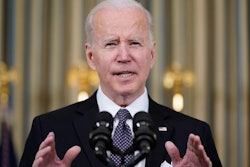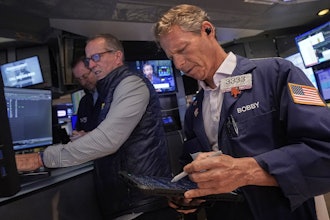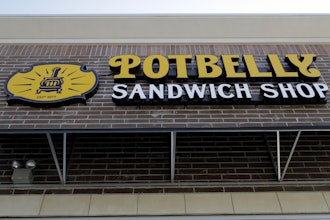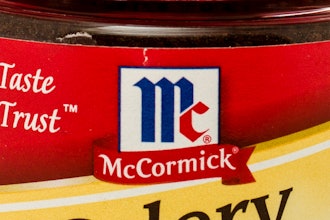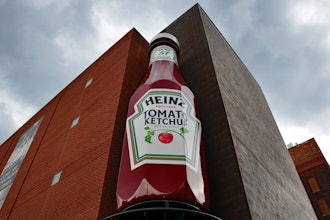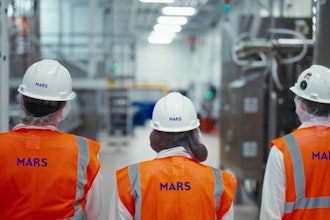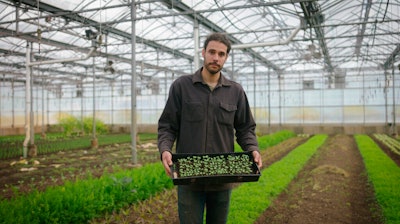
The pandemic sent global hunger soaring, but now the war in Ukraine is making the problem far worse. Since Russia and Ukraine together supply 30% of global wheat exports, a big chunk of the world is losing access to food.
Now one of the nation’s biggest foundations is trying to deal with some of these challenges with a $105 million plan to improve food access, make nutritious and healthy food more widely available, and advance production of food in ways that does not harm the planet.
Rajiv Shah, president of the Rockefeller Foundation, said the commitment is the biggest nutrition effort in Rockefeller’s history. Over the next three years, the Good Food Strategy aims to ensure that 40 million people around the world have better access to healthy and sustainable food.
“Because of climate change, food prices were already the highest in a decade, even before Russia’s barbaric invasion of Ukraine further decimated global food supplies. Now the world is on the precipice of a global humanitarian crisis,” Shah said in a statement.
The foundation and other experts say the way the world produces and consumes food is failing people and the planet. So it came up with a new strategy it hopes will shift the focus from increasing the quantity of food to improving its quality.
Rockefeller aims not just to increase access to affordable and healthy food but also to reduce greenhouse-gas emissions in the food system and expand opportunities for small food-production businesses to thrive.
The foundation has some innovative approaches to accomplishing those goals. For instance, it plans to:
— Encourage doctors to prescribe fruits and vegetables instead of drugs when appropriate since they can be both healthier and cheaper. Ten health insurance companies are working with Rockefeller to test the idea.
— Pay for healthy foods at schools, hospitals, prisons, and other state government facilities.
— Help farmers switch their production practices to approaches that reduce carbon from being released into the air after they plow the ground.
— Fund more small and medium-size food businesses to diversify the distributors and prevent supply-chain issues.
The announcement builds on one of philanthropy’s most successful efforts, the Green Revolution of the 1960s.
Rockefeller financed the technology that helped fuel production of food in a way that averted starvation in the world’s poorest countries. However, it lacked sustainability and equity. That’s what today’s effort is designed to tackle, foundation officials say.
Barron Segar, president of the World Food Program USA, agrees that something needs to be done now. Rockefeller gave the program $3.3 million in 2021 to supply nutritious food for school food programs in Africa.
“We’re facing the biggest crisis we’ve ever faced around food insecurity,” Segar said. “There are 811 million people today who don’t have access to quality food, and they don’t know where their next meal is coming from. We’re at a very pivotal moment in history where we have 45 million people that are marching toward starvation.”
Last year, Rockefeller published a report to evaluate all the ways food systems in the United States affect health, the environment, biodiversity, and livelihoods. It found that Americans paid an estimated $1.1 trillion of the cost of producing, processing, retailing, and wholesaling of food in 2019. But if other costs, like the food system’s impact on climate change were included, the cost would be $3.2 trillion a year.
One of Rockefeller’s grantees has been carrying out some of the ideas that are part of the Good Food Strategy.
FoodCorps, which received at least $500,000 from the foundation last year for its work to provide healthy food to kids in school, has already had some success in influencing food policy.
In California, FoodCorps advocated for passage of Free School Meals for All Act last year. And in Connecticut, the nonprofit helped the state achieve its first farm-to-school grant program, which will put more local foods in school meals, give educators more resources to teach students about nutrition, and sustain relationships with local farmers and producers.
Rockefeller is also working with Kaiser Permanente, a healthcare company, on its Food as Medicine program. A combined investment of more than $2 million will go toward three research studies that will evaluate healthy food-prescription programs for participants who suffer from or are at risk for diet-related diseases. Both groups are also building evidence to prove prescriptions of produce are healthier and cheaper in some cases than traditional drugs.
“Everyone needs and deserves access to healthy food they can afford,” said Pamela Schwartz, an executive director at Kaiser.
Another element of the Rockefeller plan is to focus on changing the mix of who produces food.
Roy Steiner, senior vice president of Rockefeller’s food grants work, said the pandemic has revealed how fragile supply chains are. And it doesn’t help that only a few large food distributors monopolize the industry, he says. Diversifying power and wealth in the food industry is healthier for the economy, he said, which is why part of the Good Food Strategy is to prioritize small and medium-size food businesses.
“It needs to be a diversity of crops that can be grown by a diversity of farmers,” Steiner said. “Therefore, when things break down, you have multiple players and multiple sources of supply.”
The pandemic isn’t the only crisis that has worsened hunger. Climate change and the conflicts in Ethiopia, Yemen, and Ukraine have also contributed, says Steiner.
“We would not be in such a crisis if we had more regenerative and distributed systems,” he said.
Segar, who visited the Ukraine-Poland border last weekend, said the World Food Program is pushing to feed 3.1 million people in Ukraine. Food and drinking water shortages are reported in Kyiv and in Kharkiv, two cities bearing the brunt of the war. However, the World Food Program’s resources are starting to dwindle.
Segar said the Rockefeller Foundation takes an original approach to improving food production, and it’s one that his organization is working to adopt. The foundation not only gives money, he said, but educates the public about food and uses data and research to make decisions. He referenced Rockefeller’s “True Cost of Food” report, which analyzes the impact food has on people and the planet. Segar also cites Rockefeller’s Periodic Table of Food, an effort to create a database that breaks down food composition.
Segar said his organization was able to use what it learned from Rockefeller and teach communities in Central America about healthy meals.
Segar said the World Food Program and Rockefeller both want to create a food system that everyone can afford and have access to.
“The right nutrition at the right time can save lives,” Segar said.
____
This article was provided to The Associated Press by the Chronicle of Philanthropy. Kristen Griffith is a staff writer at the Chronicle. Email: [email protected]. The AP and the Chronicle receive support from the Lilly Endowment for coverage of philanthropy and nonprofits. The AP and the Chronicle are solely responsible for all content.






